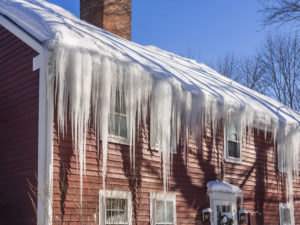How To Tell If There’s Too Much Snow On Your Roof
One of the most demanding (but realistic!) evaluations of a roof is related to its resistance to snow buildup, because in this context happens everything that may affect a roof during the cold season, from the weight of the deposited snow layer, to wind, low temperatures, ice formation and so on. In these harsh meteorological conditions, one can best identify the soft areas of a roof, vulnerabilities that can make the roof break, as well as its potentially existent problems.
This subject of snow buildup is often debated from the perspective of both the roof coating material and its structure. Many manufacturers of lightweight roofs claim that the low weight translates into a less expensive hinge. However, this apparently correct logic does not apply in a climate with massive and periodic snowfall. In this case, the structure of the roof must be thoroughly consolidated, taking into account the maximum values that precipitations can reach.
Snow deposits can be uniform on the roof`s surface, when the wind is absent or has low speeds (less than 2 m / s). When the wind exceeds 4 m / s, the snow is shattered and accumulates in obstructed or sheltered areas of the roof – and this situation may become critical.
Heavy snowfall in a very short time is also very dangerous for a roof, because the weight of the snow is bigger than you would expect and can overload the roof, which may sag or collapse. In these situations, immediately call on New England Masonry and Restoration of Connecticut to have the professionals clear the now from your home’s roof.


















